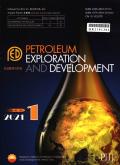Role of preservation conditions on enrichment and fluidity maintenance of medium to high maturity lacustrine shale oil
IF 8
Q1 ENERGY & FUELS
引用次数: 0
Abstract
In addition to the organic matter type, abundance, thermal maturity, and shale reservoir space, the preservation conditions of source rocks play a key factor in affecting the quantity and quality of retained hydrocarbons in source rocks of lacustrine shale, yet this aspect has received little attention. This paper, based on the case analysis, explores how preservation conditions influence the enrichment of mobile hydrocarbons in shale oil. Research showns that good preservation conditions play three key roles. (1) Ensure the retention of sufficient light hydrocarbons (C1–C13), medium hydrocarbons (C14–C25) and small molecular aromatics (including 1–2 benzene rings) in the formation, which enhances the fluidity and flow of shale oil; (2) Maintain a high energy field (abnormally high pressure), thus facilitating the maximum outflow of shale oil; (3) Ensure that the retained hydrocarbons have the miscible flow condition of multi-component hydrocarbons (light hydrocarbons, medium hydrocarbons, heavy hydrocarbons, and heteroatomic compounds), so that the heavy hydrocarbons (ΣC25+) and heavy components (non-hydrocarbons and asphaltenes) have improved fluidity and maximum flow capacity. In conclusion, in addition to the advantages of organic matter type, abundance, thermal maturity, and reservoir space, good preservation conditions of shale layers are essential for the formation of economically viable shale oil reservoirs, which should be incorporated into the evaluation criteria of shale oil-rich areas/segments and considered a necessary factor when selecting favorable exploration targets.
保存条件对中、高成熟湖相页岩油富集及流动性维持的作用
除有机质类型、丰度、热成熟度、页岩储层空间等因素外,烃源岩保存条件是影响湖相页岩烃源岩储集油气数量和质量的关键因素,但这方面的研究较少。本文通过实例分析,探讨了保存条件对页岩油中可动烃富集的影响。研究表明,良好的保存条件起着三个关键作用。(1)保证地层中有足够的轻烃(C1-C13)、中烃(C14-C25)和小分子芳烃(包括1 - 2个苯环)保留,增强了页岩油的流动性和流动性;(2)保持高能量场(异常高压),有利于页岩油最大限度流出;(3)保证留烃具有多组分烃(轻烃、中烃、重烃、杂原子化合物)的混相流动条件,使重烃(ΣC25+)和重组分(非烃、沥青质)的流动性提高,流动能力最大。综上所述,除了有机质类型、丰度、热成熟度、储层空间等优势外,良好的页岩层保存条件是形成经济上可行的页岩油储层的必要条件,应纳入页岩油区/段的评价标准,并将其作为选择有利勘探目标的必要因素。
本文章由计算机程序翻译,如有差异,请以英文原文为准。
求助全文
约1分钟内获得全文
求助全文

 求助内容:
求助内容: 应助结果提醒方式:
应助结果提醒方式:


